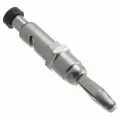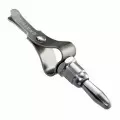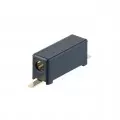OUTLINE:
How to Use RV Adapter Plug[For Beginners]
 224
224Curious about how to power up your RV when faced with different electrical outlets? Ever wondered if using an adapter plug is as complicated as it seems?
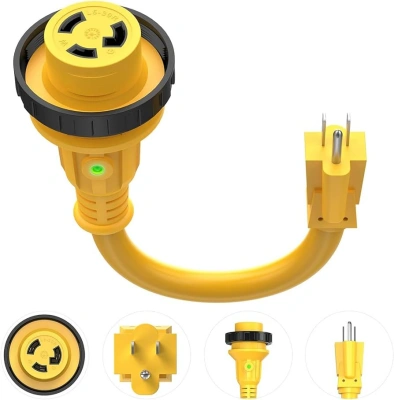
Image Source:Amazon.com
In "RV Adapter Plug Demystified: A Beginner's Guide," we'll unravel the mysteries surrounding RV adapter plugs and equip you with the knowledge you need to confidently connect your RV to various power sources.
What Is An RV Adapter Plug
An RV adapter plug is a device used to connect the electrical system of a recreational vehicle (RV) to different types of power outlets.
It allows RV owners to adapt their vehicle's power cord to fit into various electrical sources commonly found at campgrounds, RV parks, and other locations.
These adapter plugs come in different configurations to accommodate different types of outlets, ensuring that RV users can safely and effectively power their vehicles wherever they go.
What Are the Applications for RV Adapter Plug
RV adapter plugs serve several important applications for RV owners:
Access to Different Power Sources: RV adapter plugs allow RV owners to connect their vehicles to various power sources with different outlet configurations.
This flexibility ensures that RV users can access electricity at different locations, such as campgrounds, RV parks, and residential homes.
Compatibility with Campground Outlets: Many campgrounds and RV parks provide electrical hookups for RVs, but the outlet configurations may vary.
RV adapter plugs enable compatibility between the RV's power cord and the electrical outlets available at the campground, ensuring a secure and reliable power connection.
Emergency Backup Power: In situations where the RV's regular power source is unavailable or malfunctioning, adapter plugs can be used to connect the RV to alternative power outlets, such as generators or household outlets, providing emergency backup power for essential appliances and systems in the RV.
Convenience and Versatility: Having a selection of adapter plugs allows RV owners to travel with confidence, knowing that they can adapt to different electrical situations they may encounter on the road.
This convenience adds versatility to RV travel and camping experiences.
How to Use RV Adapter Plug [Step by Step]
Using an RV adapter plug is a straightforward process. Here's a step-by-step guide:
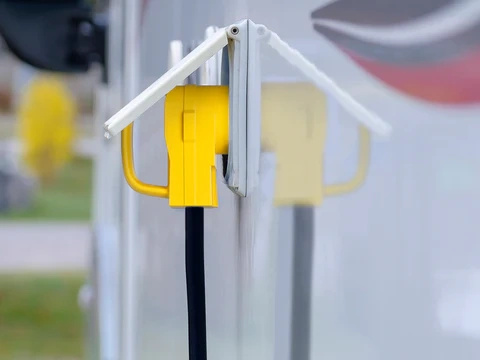
Image Source: GearIT
- Identify the Outlet Type: Determine the type of electrical outlet available at your campground or RV park. Common types include 30-amp, 50-amp, and household outlets.
- Select the Correct Adapter Plug: Choose the RV adapter plug that matches the outlet type. Adapter plugs come in various configurations, such as 30-amp to 50-amp, 50-amp to 30-amp, and others, to ensure compatibility between your RV's power cord and the outlet.
- Turn Off Power: Before connecting the adapter plug, make sure the power source is turned off to avoid any electrical hazards.
- Connect the Adapter Plug: Insert the prongs of the adapter plug into the corresponding slots of the outlet. Ensure a secure connection by pushing the plug firmly into place.
- Connect the RV Power Cord: Once the adapter plug is securely in place, connect your RV's power cord to the adapter plug. Align the prongs of the RV cord with the slots on the adapter plug and push them in until they are fully seated.
- Test the Connection: After connecting the RV power cord, turn on the power source and test the connection to ensure that electricity is flowing to your RV. Check that all appliances and electrical systems inside the RV are functioning properly.
- Monitor Usage: Be mindful of the electrical load on your RV to prevent overloading the circuit. Avoid running multiple high-powered appliances simultaneously, especially if you are using a lower-amp outlet.
- Disconnect Safely: When you're ready to disconnect from the power source, turn off the power and unplug the RV adapter plug from the outlet. Remove the RV power cord from the adapter plug by pulling it straight out.
What Are the Different Types of RV Adapter Plug
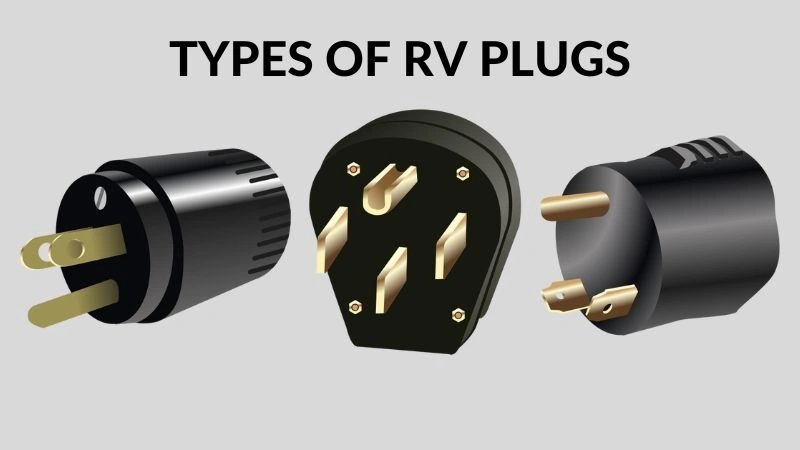
Image Source:Electronics Hub
RV adapter plugs come in various types and configurations to accommodate different outlet types and power needs. Some common types include:
30-Amp to 15/20-Amp Adapter: This type of adapter allows you to connect your RV's 30-amp power cord to a standard 15 or 20-amp household outlet. It's handy for situations where only household outlets are available.
30-Amp to 50-Amp Adapter: If your RV has a 30-amp power cord but the campground or RV park offers 50-amp electrical hookups, this adapter allows you to connect your RV to the higher-amp outlet.
50-Amp to 30-Amp Adapter: Conversely, if your RV has a 50-amp power cord but the available hookup is only 30 amps, this adapter enables you to connect your RV to the lower-amp outlet.
50-Amp to 15/20-Amp Adapter: Similar to the 30-amp to 15/20-amp adapter, this type allows you to connect a 50-amp RV power cord to a standard household outlet.
50-Amp to Dual 30-Amp Adapter: Some RVs with 50-amp service have two separate 30-amp circuits. This adapter splits the 50-amp power into two 30-amp circuits, allowing you to connect to two separate 30-amp outlets simultaneously.
Final Verdict
"How to Use RV Adapter Plug" provides a comprehensive and practical resource for RV enthusiasts of all levels. By elucidating the intricacies of adapter plug usage, this guide empowers readers to confidently navigate the diverse array of power sources encountered during RV travels.
From selecting the appropriate adapter to ensuring a secure connection, this guide equips users with the knowledge and skills necessary to maximize the convenience and functionality of their RV electrical systems.
With this essential information at hand, readers can embark on their adventures with peace of mind, knowing they are prepared to effectively harness the power needed to fuel their journey.

Disclaimer: The views and opinions expressed by individual authors or forum participants on this website do not represent the views and opinions of Chipsmall, nor do they represent Chipsmall's official policy.

share this blog to:


